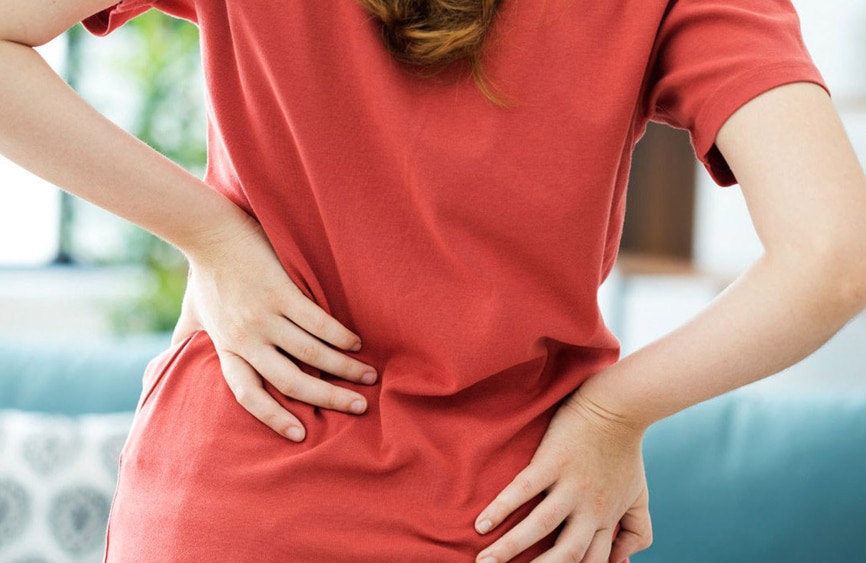
Tips To Reduce Lower Back Pain During Period
Understanding the range of symptoms associated with menstruation, commonly known as period, can help women better manage their health and seek appropriate care when needed.
Menstruation can consist of abdominal pain, bloating, and headaches for most women. Alongside these common symptoms, some women also experience low back pain during periods. This back pain can vary from a mild, nagging discomfort to severe, debilitating pain during those days of the month. The pain experienced is typically located along the center portion of the low back and can significantly affect your daily activities. Back pain for most women will begin a few days prior to a menstrual cycle and usually subside after. The good news is that low back pain during periods is usually not serious and typically subsides on its own. However, it’s important to understand the underlying causes and learn how to manage and cope with the pain effectively.
What Causes Low Back Pain During Menstruation?
Low back pain during menstruation is typically muscular in nature and thought to be caused by hormone changes. Prostaglandins (hormones released during a menstrual cycle to promote uterine contraction to shed the uterine lining) can affect the lower back muscles. An excess of prostaglandins causes dysmenorrhea or painful menstruation. Heavy contractions can lead to low back pain, as the pain can radiate from the lower abdomen into the low back.
Understanding why back pain during periods occurs involves recognizing that this pain is a common result of hormonal fluctuations. Additionally, women with endometriosis may experience low back pain during their menstrual cycle. If this is a concern, it’s advisable to consult with your doctor to discuss diagnosis and treatment options.
Tips on How to Reduce Back Pain During Periods and Painful Cramps:
- Some women benefit from starting over-the-counter acetaminophen or anti-inflammatories, such as ibuprofen or naproxen, a couple of days prior to menstruation.
- Exercise regularly. Studies show that women who exercise on a regular basis have less painful period cramps and low back pain.
- Maintain a healthy diet and take nutritional supplements with vitamin B and magnesium
- Drink plenty of water to stay hydrated.
- Apply heat or take warm baths.
- Avoid caffeine and chocolate.
- Avoid alcohol intake and smoking.
- Some women may require birth control pills to help with menstrual pain.
If your low back pain lingers past the menstrual cycle or you develop leg pain or weakness, you should seek medical attention, as this may be more than the typical menstrual back pain stemming from prostaglandin release during menstruation. Here are the top back pain symptoms you should not ignore, and could be potentially dangerous for your health:
Top 5 Pain Symptoms You Should Not Ignore:
- Pain that lasts longer than 10 days
- Pain accompanied by numbness and tingling in the legs or feet
- Pain with weakness into the legs or feet
- Pain with loss of bladder control
- Pain accompanied by a fever
We know that people are afraid of going to the doctors, and a big part of that is because they are afraid to hear what the doctor has found. Patients are better off figuring out what is happening, and then being proactive about taking care of themselves and their spine. If something doesn’t feel right, it may not be right.
Through modern technology and innovation, the field of spine treatments has jumped by leaps and bounds over the last 15 years. Gone are the days of being sedentary for healing. With modern technology, patients are getting up and moving sooner which means getting back to their lives faster.
If you are suffering from neck or back pain, please contact us to schedule your initial evaluation. At VSI, our spine doctors will conduct a thorough medical examination to help get you back to a fulfilling, pain-free life!
Topics covered
About the Author
Featured Resources
Insights to Achieve a Pain-Free Life



